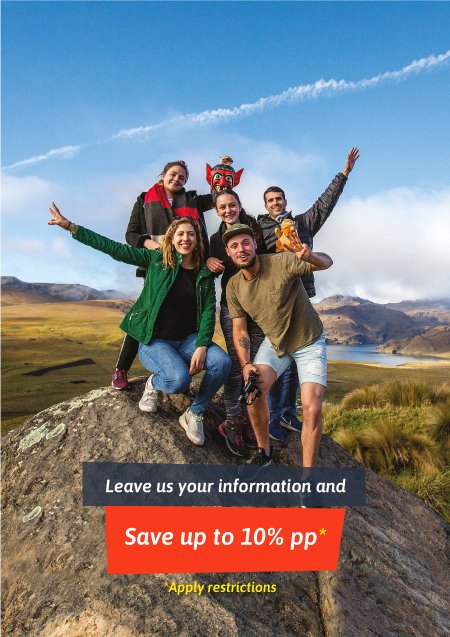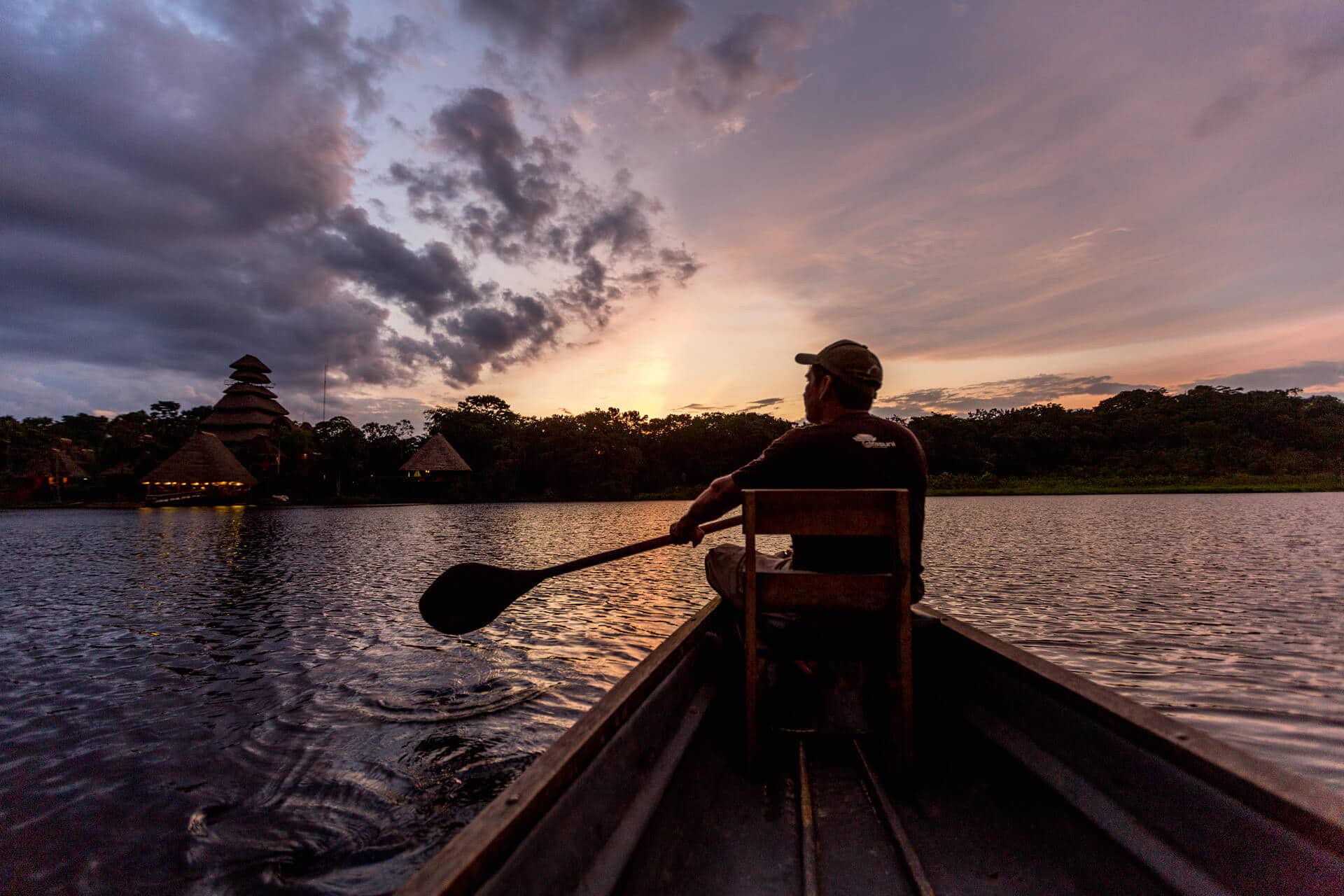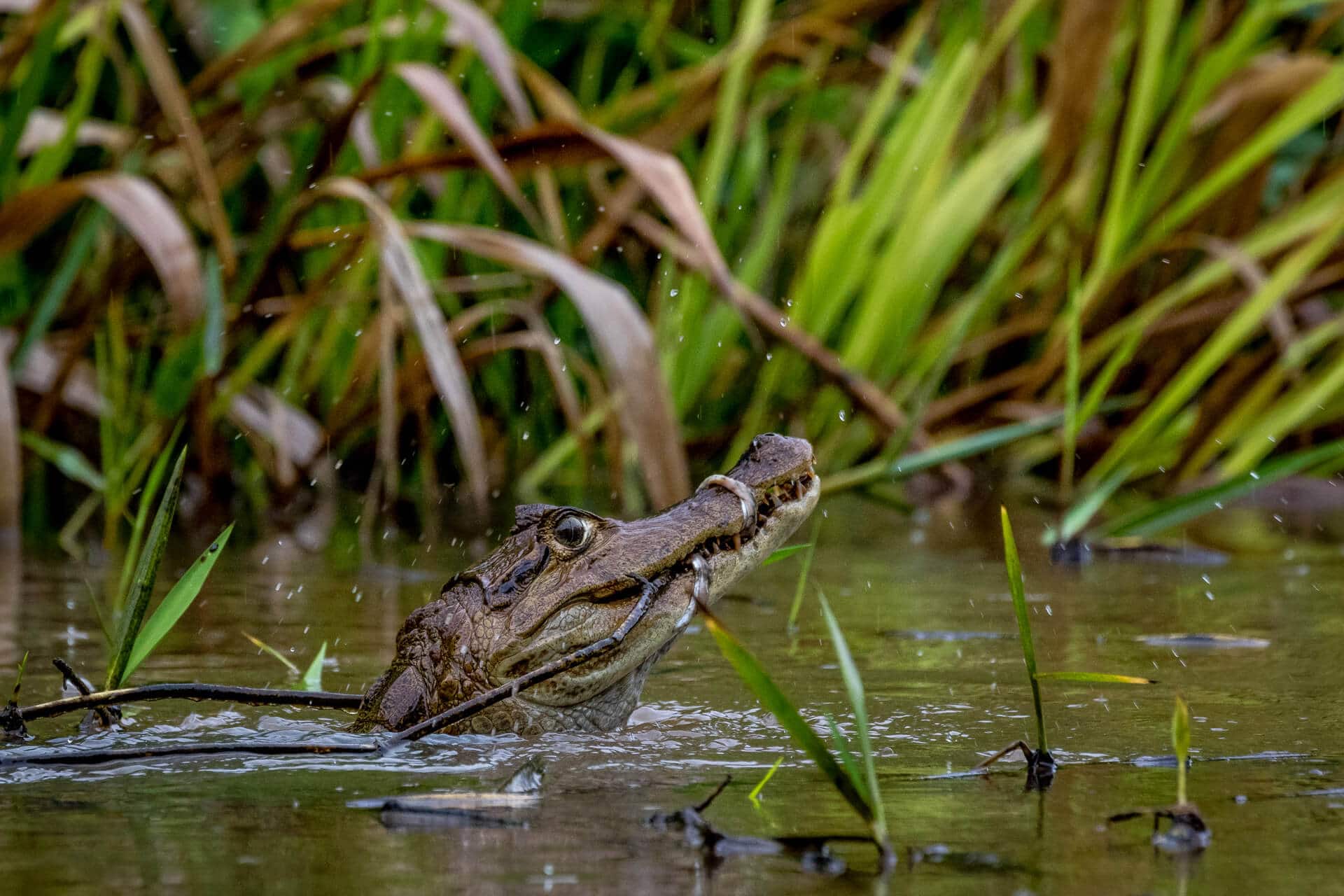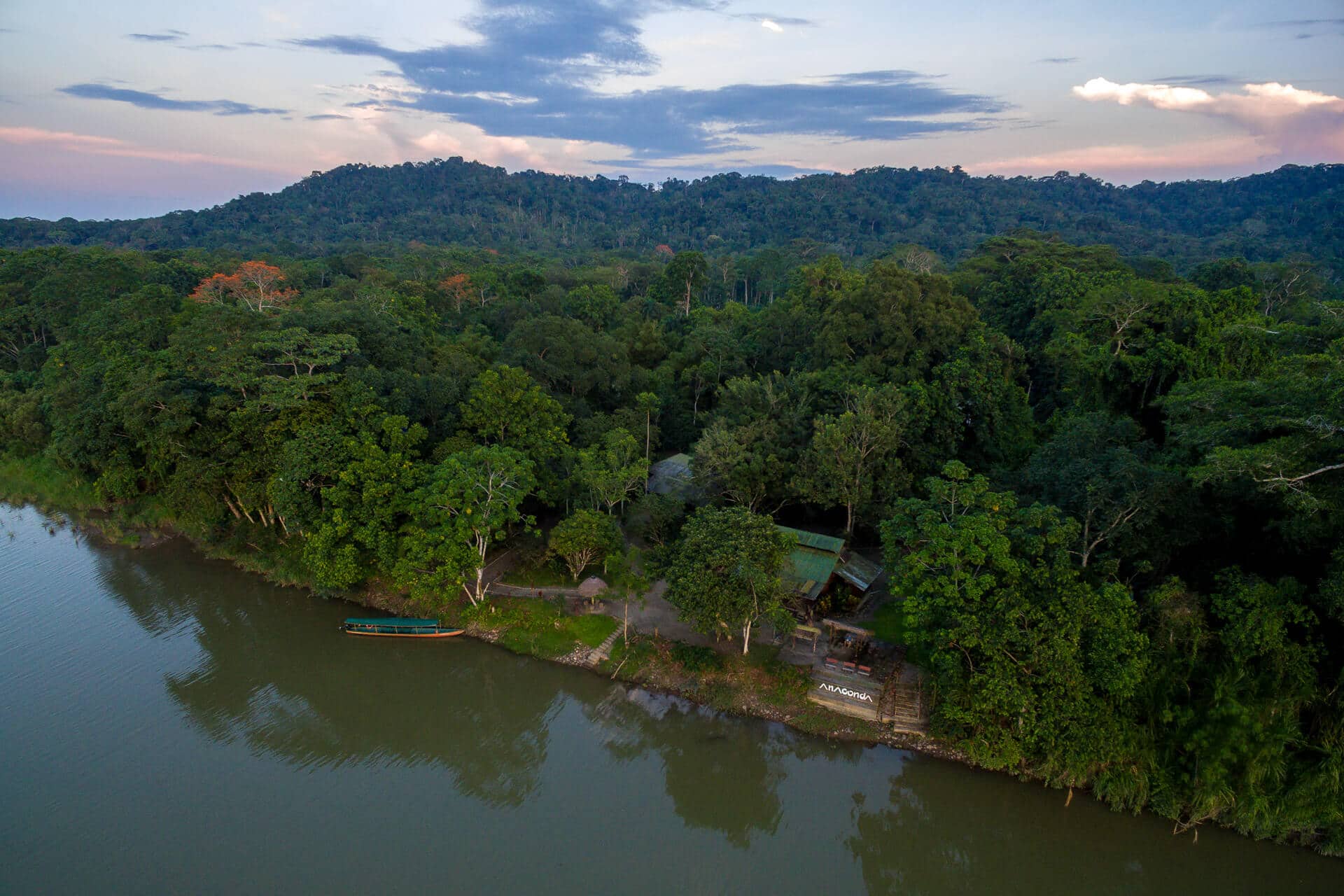From the most fearless adventurer to the “luxury all included” kind of traveler, everyone who visits Ecuador gets captivated by the magnificent Amazon rainforest. So, if this trip still remains on your “bucket list” and you’re wondering when to visit the Amazon Rainforest in Ecuador, keep on reading.
This vast expanse of the jungle is one of the four “worlds” within the Ecuadorian territory, alongside the coast, the highlands, and the legendary Galapagos Islands. With around 120.000 kms² of territory, the Ecuadorian Amazon region or la selva contains more biodiversity per square kilometer than any other place on the globe, and it’s also the homeland of more than 15 indigenous nationalities. How amazing is that!
And the best part – you can visit the Amazon all year round.
Which season is the best to visit the Amazon rainforest?
In the Amazon, the question isn’t whether it rains, but how much, so get ready to enjoy some storms! Don’t worry! They tend to be torrential but brief.
In terms of seasons, the period from April to June is considered the wettest – let it rain! – which means the rivers are more easily navigated. This gives travelers the best chance of spotting wildlife, so consider booking a boat tour to witness the majestic caimans and anacondas. More rain also means a few more mosquitos (but nothing that can’t be solved with a good insect repellent and a long-sleeved shirt). June is especially wet, so if massive rains make you happy, this is your ideal month to visit!
There is always rain in the Ecuadorian jungle, just a little less during the drier seasons (December to February and July to October). The driest period of August to October is the breeding season for many of the species in the rainforest. Since the water level decreases, this is the best time to explore the jungle on foot. Although, this is not the preferred season for passionate ornithologists, as many birds are hiding from the heat. If you struggle with hot weather, you might like to avoid these months too.
Ok, but when should I visit the Amazon Rainforest in Ecuador?
There is no bad time to visit the Amazon Rainforest; it all depends on your personal preferences and priorities, and of course, on how much the idea of getting wet – or less wet – delights you!
How is the weather in the Amazon rainforest?
The fact that Ecuador’s rainforest is the only portion of the Amazon located on the Equator makes it unique — the climate in this region doesn’t experience big changes year round.
Rain, rain, rain!
Rainfalls vary little across much of the Amazon region, which sees around 3,200mm to 35,00mm of rain in a year. In areas of the jungle close to the Andean foothills, however, the rainfall can reach 4,300mm.
The average temperature is 25ºC (77°F), but it can vary a lot at different times of day. In the dry season for example, you can experience 30ºC – 35ºC (86°F – 95°F) during the daytime but then it gets cooler (20ºC / 68°F) during the nighttime, with this pleasant temperature continuing until mid-morning. This variation in temperature may not feel comfortable all the time, but guess what! The humidity provides some natural moisture for your skin. Not bad, right?
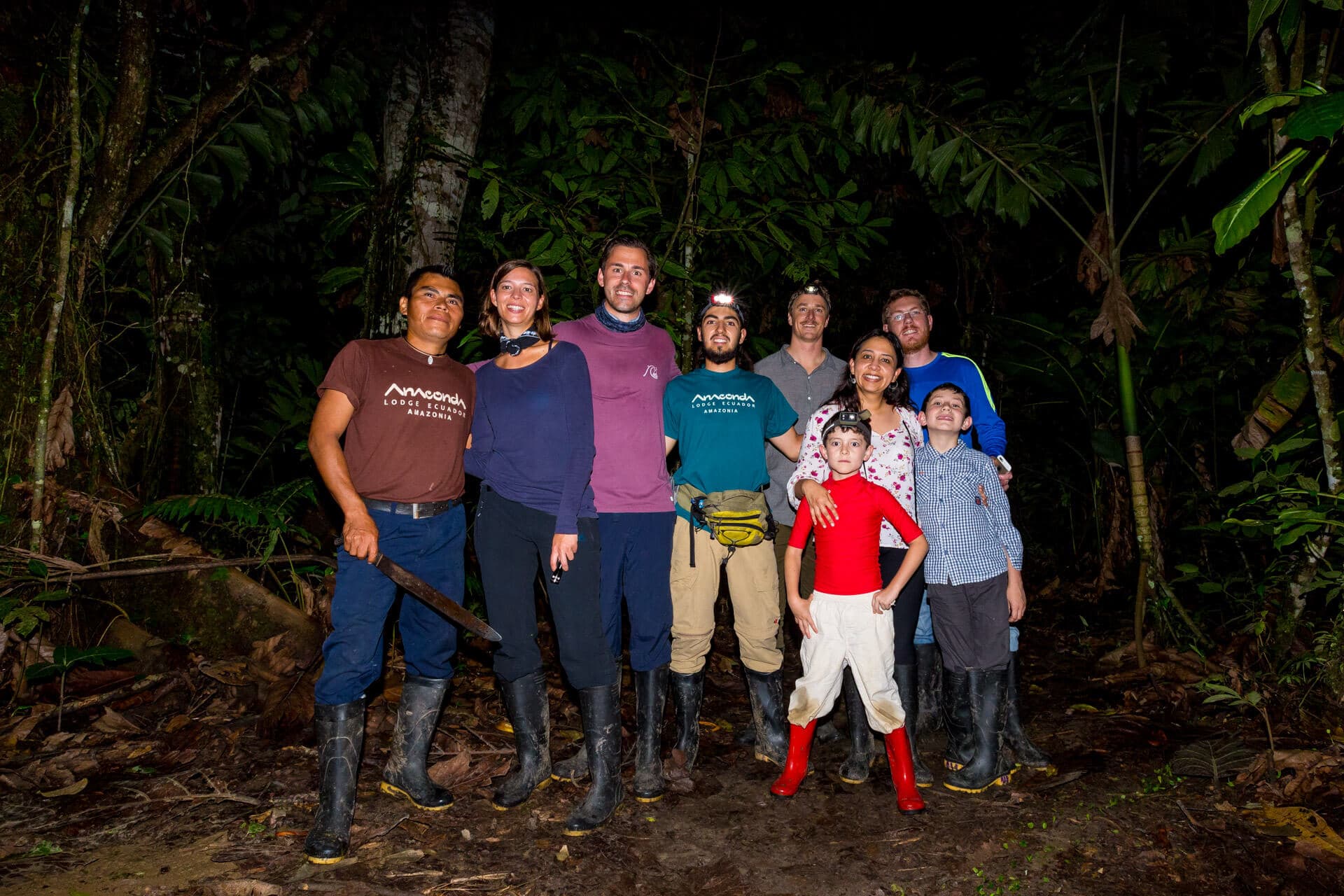 What should you pack for your trip?
What should you pack for your trip?
Once you have a clearer idea on when to visit the Amazon Rainforest in Ecuador, the second big question is what to bring with you.
Knowing what to pack before an Amazon adventure can be tricky and you definitely don’t want to end up with an overloaded backpack, so let’s give you some guidance on the essentials.
- A proper rain poncho (it is much more useful than a jacket as it will also keep your daypack dry).
- Rubber boots (some lodges can provide you with these, but don’t take the risk, especially if you are a man with big feet). If you have already booked with a lodge, just ask them if they have your size.
- Lightweight long pants (not jeans) and long-sleeved tops, for avoiding insect bites (light color leggings work well for women).
- A hat, sunglasses, and sunblock will help you to prevent occasional sunburn.
- A good insect repellent is a must (lemon eucalyptus or citronella oil work well if you want to avoid the chemicals in DEET-based products).
- A flashlight is necessary for night walks and nighttime bathroom trips (when there is often no electricity).
- Binoculars help with spotting birds and wildlife from a canoe.
- And some snacks to keep energy levels up on those treks!
IMPORTANT NOTICE: There is a low risk of malaria in the Amazon basin and medication is not considered necessary. However, yellow fever vaccination is recommended (these last for life, so if you’ve ever had one, you’re covered).
Water purifier tablets are not needed in the Amazon, as all tourism projects provide drinking water.
How to arrive to the Amazon Rainforest in Ecuador?
There are two ways to get to Lago Agrio and Coca (two of the Amazon’s main gateway towns) from Quito: either by bus (over 8 hours) or a half-hour flight.
Lago Agrio offers access to several indigenous tourism initiatives where the income directly supports the local people. The Kofán and Siekopai nationalities have some of the best taitas (shamans) in the country and provide an affordable way to experience the rainforest while sharing community life.
Check these extra tours Wanderbus has for you:
From Lago Agrio you can easily reach the Cuyabeno Wildlife Reserve. Don’t miss the chance of an exceptional insight into the second largest reserve in Ecuador!
From Coca you can canoe the Napo River and have a real experience in the Amazon Rainforest that you’ll never forget.
Yasuní National Park (located in the heart of primary rainforest) can be visited in one- to three- day tours from Coca. Yasuní tours are often combined with the nearby Limoncocha Reserve – which you can also visit independently and stay in a Kichwa community accommodation for a reasonable price. For a longer stay, there are several community-owned lodges in Yasuní National Park, but make sure to book well in advance.
Only four hours from Quito, Tena and Puyo are the best gateway towns to visiting Kichwa communities. Experiences tend to be cultural, rather than immersions in nature, though there are some beautiful waterfalls nearby. Tena is also Ecuador’s white-water rafting center, with plenty of Class III and Class IV rapids close to town – a once in a lifetime experience for extreme sports lovers.
Also, the most common and easiest way to get to the jungle is throughout the city of Banos, well known because of the Tungurahua Volcano, extreme sports, hot springs, and astonishing views. Don’t miss the chance to visit this beautiful place before your trip to the rainforest.
Well, it’s time to let the Amazon adventure begin!
